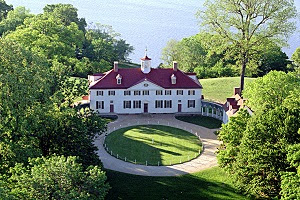Navigation Tributaries Watershed and People
The Missouri
is
the longest river in North America, rising in the Rocky Mountains and flowing east
and south for 2,341 miles - 3,767 km - before connecting with the
Mississippi north of St. Louis.
History for over
12 thousand years, people have depended on the Missouri River as a source of
food and transportation as ten Native American groups have led a nomadic lifestyles
along with the buffalo herds. In the late 17th century, Spanish and
French explorers reached the river which become part of the United States with
the Louisiana Purchase of the early 1800s. Meriwether Lewis and William
Clark followed the Missouri on their 1803-06 journey to the Pacific Ocean.
Navigation boat
travel on the Missouri started with wood-framed canoes and Native American bull
boats. The first steamboat was the Independence, in 1819. By the 1830s,
large mail and freight-carrying vessels were running regularly between Kansas
City and St. Louis. Water transport increased through the
1850s with craft ferrying pioneers, emigrants and miners. Steamboat navigation
peaked in 1858 with over 130 boats operating full-time on the Missouri.
Tributaries nearly 100
significant tributaries and hundreds of smaller ones feed the Missouri River.
Most rivers and streams in the Missouri River basin flow from west to east,
following the incline of the Great Plains; however, some eastern tributaries,
such as the James River, flow from north to south. The largest by runoff are
the Yellowstone in Montana and Wyoming, and the Platte in Wyoming, Colorado and
Nebraska.
Upper and Lower the
Upper River is north of Gavin Point Dam, the last of 15 hydroelectric dams upstream
of Sioux City. The lower Missouri runs 840 miles meeting the Mississippi just
above St. Louis.
The
Watershed encompasses most of the
central Great Plains, stretching from the Rocky Mountains in the west to the
Mississippi River Valley in the east and from the southern extreme of western
Canada to the border of the Arkansas River. This watershed is home to
12 million people in Nebraska, Colorado, Iowa, Kansas, Minnesota,
Missouri, Montana, North and South Dakota, and Wyoming. The watershed's largest
city is Denver; many northwestern cities, like Billings Montana, are among the fastest growing in the
Missouri basin.
The Missouri
Watershed includes 25 percent of Agricultural Land in the United States
The People archaeological
evidence suggests that the first arrivals in the watershed of the Missouri
River were between 10 and 12 thousand years ago, making the Missouri River one
of the main migration paths that settled in the Ohio and the lower Mississippi
River Valley.
Pioneers the river defined the American frontier in
the 19th century as the major trails that opened the American West
started on the Missouri River.
The First Westward leg of the Pony
Express was a Ferry across the Missouri River
Most emigrants arrived at the eastern terminus
of the First Transcontinental Railroad via a ferry ride across the Missouri
between Council Bluffs and Omaha. In 1869, the Hannibal was the first bridge to
cross the Missouri River near Kansas City, the largest city upstream from St.
Louis.
Manifest Destiny over one
half million people set out from the river town of Independence, Missouri to
their various destinations in the American West from the 1830s to the 1860s.
Covered wagons, known as prairie schooners, provided the primary means
of transport until the beginning of regular boat service in side wheelers and
sternwheelers in the 1850s. Over 80 percent of upstream passengers and freight
hauled from the Midwest to Montana was transported by boat, a journey that took
150 days. Conflicts between natives and settlers over the opening of the Bozeman Trail in the Dakotas, Wyoming and
Montana resulted in Native American victory. However, the Great Sioux War of 1876-77, sparked when American miners discovered
gold in the Black Hills, ended in relocation to reservations.
Missouri River
Itineraries


















